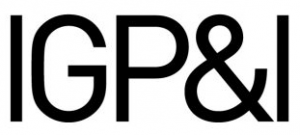Published 11 August 1999
Circular No. 9/99 August 1999
TO THE MEMBERS
Dear Sirs,
THE NEW ENGLISH CIVIL PROCEDURE RULES - Effective as from 26 April 1999 -REQUIREMENTS ON MEMBERS
On 26 April 1999, the English civil procedural system for courts underwent a radical transformation brought about by the implementation of new Civil Procedure Rules ("CPR"). The CPR constitute a "new procedural code" and represent a complete change in the nature and culture of the English civil justice system from an adversarial system to one where there is greater control exercised by the court and which requires greater co-operation between the parties.
The CPR will affect claims both which commence after 26 April 1999 and those commenced prior to this date (a recent Court of Appeal decision confirmed that litigants should not assume that just because their case commenced before the new rules came into force, they will not be subject to the principles of the CPR).
The new Rules place greater obligations on the parties (and not just their lawyers) and it will be necessary for Members to make changes in their claims handling routines in order to ensure compliance with the CPR. In particular, Members will need to ensure that procedures are in place to deal with the following matters:
PRE-ACTION INVESTIGATION - Appoint a Claims representative/handler
The CPR contain strict time limits for service of Statements of Case, disclosure of documents and any of the court's other directions. Non-compliance with these time limits will result in costs sanctions and other penalties ordered against the defaulting party. In order to comply with the strict time limits Members must ensure that the claim is fully investigated even before the issue of proceedings. Members should note that applications for extensions of time will not be well received by the court. The Association recommends therefore that in each case, from the time that an incident occurs which is likely to give rise to a claim, Members appoint a representative to oversee it and to liaise with the Association/legal representative who then is in a position to provide information which is required by the court, promptly and within the time limits.**THE STATEMENT OF TRUTHAppoint a signatory with authority to sign Statement of Truth**All Statements of Case must now be verified by a Statement of Truth. This is a statement by the party that the facts contained in the Statement of Case are true. If the claimant is a company, the person who holds a senior position is to sign the Statement of Truth.
If a Statement of Truth is not included any other party may apply to strike out the claim. A false Statement of Truth will be in contempt of court and may result in imprisonment.
Members must ensure that there is someone within their office who has knowledge of the case and is able to verify the Statement of Case and sign the Statement of Truth. The Association recommends that in each case a representative is appointed to carry out this obligation properly.
THE DISCLOSURE STATEMENT - Appointment of signatory authorised to sign Disclosure Statement
All parties are now required to sign a Disclosure Statement setting out the extent of the search for documents required to be disclosed in the court case. This statement will confirm that the party understands the duty of disclosure and certifies that to the best of the party's knowledge, it has complied with that duty. If the party is a company or other organisation, the statement must identify the person making the statement and explain why he is an appropriate person to make the statement.
Members must ensure that there is someone within their office who has knowledge of the case and is able to confirm the extent of the search for documents. The Association recommends that in each case a representative is appointed to conduct the search/verify that it has been performed and who is able to then sign the Disclosure Statement.
Members are therefore advised to contact the Association as soon as there is an incident which is likely to give rise to a claim. The Association will then advise Members on their requirements under the CPR.
Further details of the underlying principles of the CPR and the requirements now imposed on Members are described in the Appendix to this document. Members are also referred to the more detailed explanation which will appear in an article in the September 1999 issue of Gard News (issue No. 155).
Members are referred to the related Circular No. 10/99 for details of the requirements placed upon them under the Personal Injury Pre-action Protocol.
Yours faithfully, ASSURANCEFORENINGEN GARD -gjensidig-
John G. Bernander Managing Director


